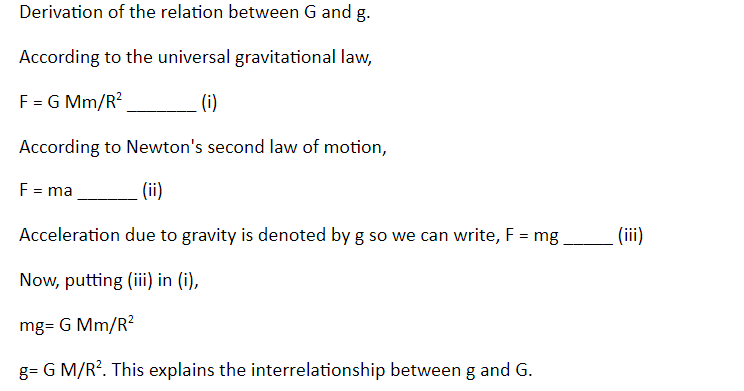
Achieve your IIT dreams with Unacademy
Recommended links:
Of all Newton’s scientific research, the gravitational force and aspects associated with it are the most significant ones. It holds extreme importance in physics and should be understood well for developing a deeper knowledge of physics. The gravitational force is responsible for holding two bodies closer by their mass.
The application of gravitational force was discovered by Newton when we compared the acceleration of the moon to the acceleration of other bodies or objects on the Earth. He believed that some sort of attraction or force is working to hold the bodies connected to each other. This comparison and study led him to conclude that the force of gravitational attraction between the Earth and other bodies is inversely proportional to the distance between the two bodies’ centres.
But Newton’s law of universal gravitation expands gravity beyond the Earth. This law is more about the universal applicability of gravity and the gravitational constant.
What is the force of gravitational attraction?
According to Newton’s definition, the force of gravitational attraction is the force that is dependent on the masses of both bodies and is inversely proportional to the square of the distance that separates the centres of the bodies.
Fgav α m1 m2/d2
Where Fgav is the force of gravitational attraction.
m1 is the mass of the body 1
m2 is the mass of the body 2
d is the distance between the centre of the bodies.
As the gravitational force of attraction is dependent on both the interacting body’s mass, bigger bodies will attract each other with a huge amount of gravitational force of attraction. When the mass is doubled, the gravitational force also doubles up.
As the gravitational force of attraction is inversely proportional to the distance between the centre of the interacting bodies, the bigger the distance, the weaker the gravitational force of attraction will be. If the distance between the two interacting bodies’ centres is doubled, then the force of gravitational attraction also decreases four times.
Universal gravitational constant.
The constant proportionality present in Newton’s equation of gravitational force is called the universal gravitational constant.
Fgav α m1 m2/d2
Fav = G x m1 m2/d2. Here G stands for gravitational constant. The dimensional formula of G is [M-1L3T-2].
Derivation of the universal gravitational constant.
Force = G x m1 x m2 x [r2]-1
Or, G = Force x r2 x [m1xm2]-1 _____ (1)
Dimensions of the following properties are,
Mass = [M1 L0 T0] _____ (2)
Radius = [M0 L1 T0] _____ (3)
Force = [M1 L1 T-2] ______ (4)
By substituting equations (2), (3), and (4) in (1) we get,
G = [M1 L1 T-2] × [M0 L1 T0]2 × [M1 L0 T0]-1 × [M1 L0 T0]-1 = [M-1 L3 T-2].
So the dimensional formula of the universal gravitational constant is [M-1 L3 T-2].
SI unit: SI units: 6.67 × 10-11 Nm2 kg-2,
CGS unit: 6.67×10-8 dyne cm2 g-2.
Correlation between acceleration due to gravity and gravitational constant.
A body that falls under the influence of gravity is called a free-falling body. This body possesses an acceleration of 9.8 m/s2 downward (towards the earth’s surface). This value is very significant for multiple calculations and thus is given a specific designation as well; it is called the acceleration due to gravity, and it is denoted by g.
On the other hand, the force of attraction between two bodies of unit masses separated by a unit distance is called the universal gravitational constant. It is denoted by G. the numerical value of G is 6.67 x 10-11 Nm2/Kg2.
G and G is related to each other in the following way,
g = GM/R2.
Here g is denoted as the acceleration due to gravity; G is the universal gravitational constant; R is denoting the radius of the body in Km, and M is the mass of the body in Kg.
Even though there is a formula with both G and g in it but both are independent of each other. So the universal gravitational constant is not influenced by the acceleration due to gravity. The value of G is the same at any position in this universe as it is constant, so it cannot be influenced by the activity of g.
Conclusion
Of all the discoveries made by Newton, the law of gravitation is one of the most significant ones and helps in drawing justification about a lot of phenomena happening in nature. Even though Newton found the gravitational law, it was Cavendish who found what gravitational constant is. There are many theories developed later on the aspects of the universal gravitational constant. One of which is that since the world is expanding after the Big Bang happened, the power of G is decreasing gradually.
Understanding what a gravitational constant is extremely important to work out on different problems as well.
Explore IIT JEE Coaching in Different Cities
 Profile
Profile Settings
Settings Refer your friends
Refer your friends Sign out
Sign out








